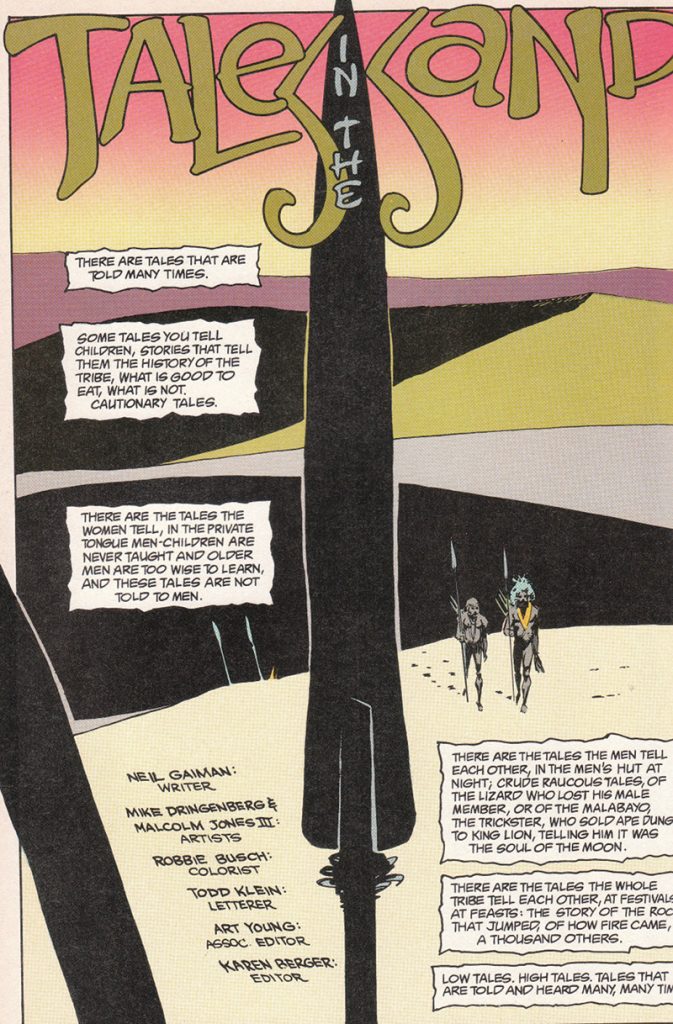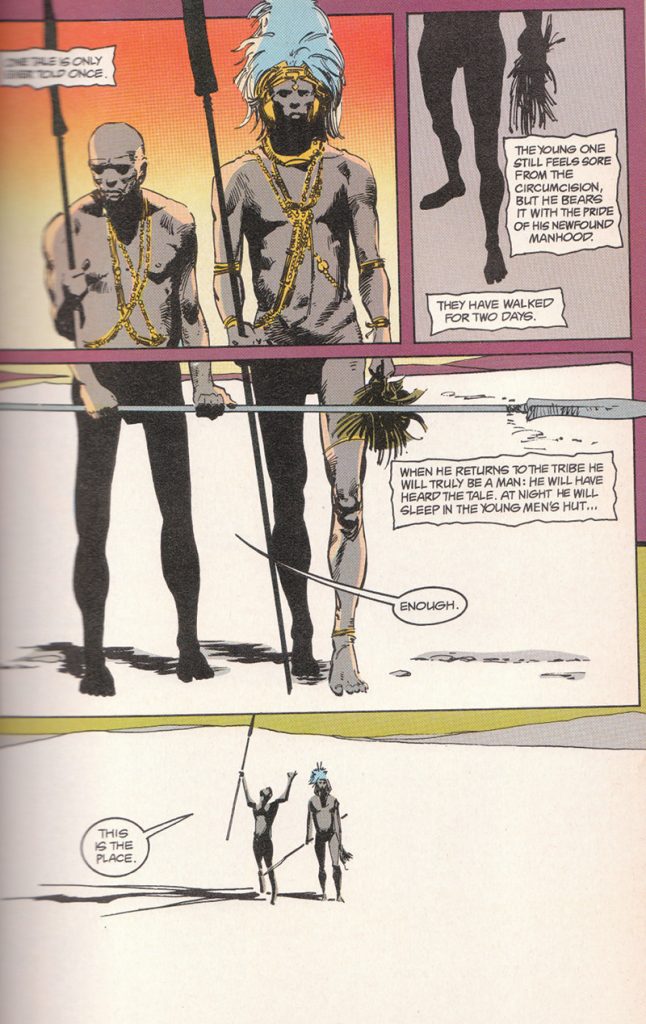“I am going to tell you a story,” says the man.
“What is it about?” The boy asks.
“This story is about stories,” the man says, “Back in the old days, when the world still believed in magic, there were those that could wield that power. They used these powers for good, to heal and to help. They would also use their magic for games and contests. They would meet in the woods with the light shining down on them as it always did, for evil and darkness had not yet touched the world. That day, they competed to see who could be the scariest of them. This was all done in jest, of course. They shifted their appearance, brewed potions and cast spells until one stranger stepped forward. No one had ever seen this stranger, who appeared neither man or woman, but all listened as the stranger told its story. Tales of death, plague, and hate tumbled from the stranger’s mouth. As they listened, the sky began to darken and the woods stood silent, until they were standing in complete darkness. One of them, braver than the others, stepped forward to speak to the stranger.
‘What have you done?’ The brave healer asked. The stranger stood in silence, already seeming to fade into the darkness itself. Another stepped forward.
‘Take back your story!’ The other pleaded, desperation in their voice. Everyone began to cry, knowing at the bottom of their hearts that the story could not be taken back. The stranger had brought evil into the world.”
“Why couldn’t the story be taken back?” The boy asks.
“Because once a story has been loosed in the world, it cannot be taken back. A story is not something tangible that can be caught and hidden once the first storyteller has told it. That is both the curse and the gift of the story.”
For my version of this story, I chose to pair it with a framing device of a man passing this knowledge down to a boy. The story that Thomas King tells about how evil came into the world is not about evil, but about the power that stories hold. The story only become tragic in this instance because it is evil being loosed into the world. However, stories can also function to deliver good, or even happiness, depending on the subject matter. The story within a story within a story also appealed to me. I also removed the fact that they were all witches, as I find that witches has a very negative connotation. Instead, I chose to make them simply practitioners of magic. I also accentuated the ominous quality of the storyteller within the story by giving them the title of stranger.
After memorizing my story, I chose to relay my story to three different groups. For this assignment, I thought it would be interesting to tell my story to groups that I had varying degrees of comfort with. First, I told my story to my sister, who I live with. Because we spend so much time together, my delivery of the story was fairly confident and stayed pretty well in line with the written version of my story. Next, I took my story to a close group of friends. I told my story in the public library this time, so, while I was comfortable with my group of friends, I did feel a little unease that other people might overhear us. I also noticed that this time, my story started to waver from the written version with small details changing. I think this was because I was more nervous performing (if we can call it that) for my friends than for my sister and our cat. Finally, while I did not solicit strangers to hear my story, I did ask a new friend that I am not quite comfortable with. This made me even more nervous because, even though he agreed to hear it, the situation almost felt awkward because we do not know each other very well.
I am very shy in many situations, so I was surprised I was even able to finish telling the story at all. I wonder how many people had this experience in retelling their story? Did you begin to deviate from your written version as you were forced to use your memory? Now, I am beginning to see why stories that originate from oral storytelling appear to have so many versions that go from changing small details to larger details.
After further reflection and my dialogue with Kaylie in the comment section, it occurs to me that part of my influence came from the Sandman graphic novel. If you are interested in reading the whole volume, this comes from Volume 2, The Doll’s House. I highly recommend reading the entire series, though. There are so many interesting references to literature, mythology, etc. Also, Neil Gaiman is a fantastic writer. I am posting images of the first two pages of The Doll’s House, which contain some interesting dialogue on storytelling.


Works Cited
Gaiman, Neil, writer. Dringenburg, Mike and Malcolm Jones III, artists. The Doll’s House. Vertigo, 1990, pp. 1, vol. 2 of The Sandman, http://ic.pics.livejournal.com/perpetual/17950093/52685/52685_original.jpg. Accessed Oct. 2016.
Gaiman, Neil, writer. Dringenburg, Mike and Malcolm Jones III, artists. The Doll’s House. Vertigo, 1990, pp. 2, vol. 2 of The Sandman, http://ic.pics.livejournal.com/perpetual/17950093/74406/74406_original.jpg. Accessed Oct. 2016.